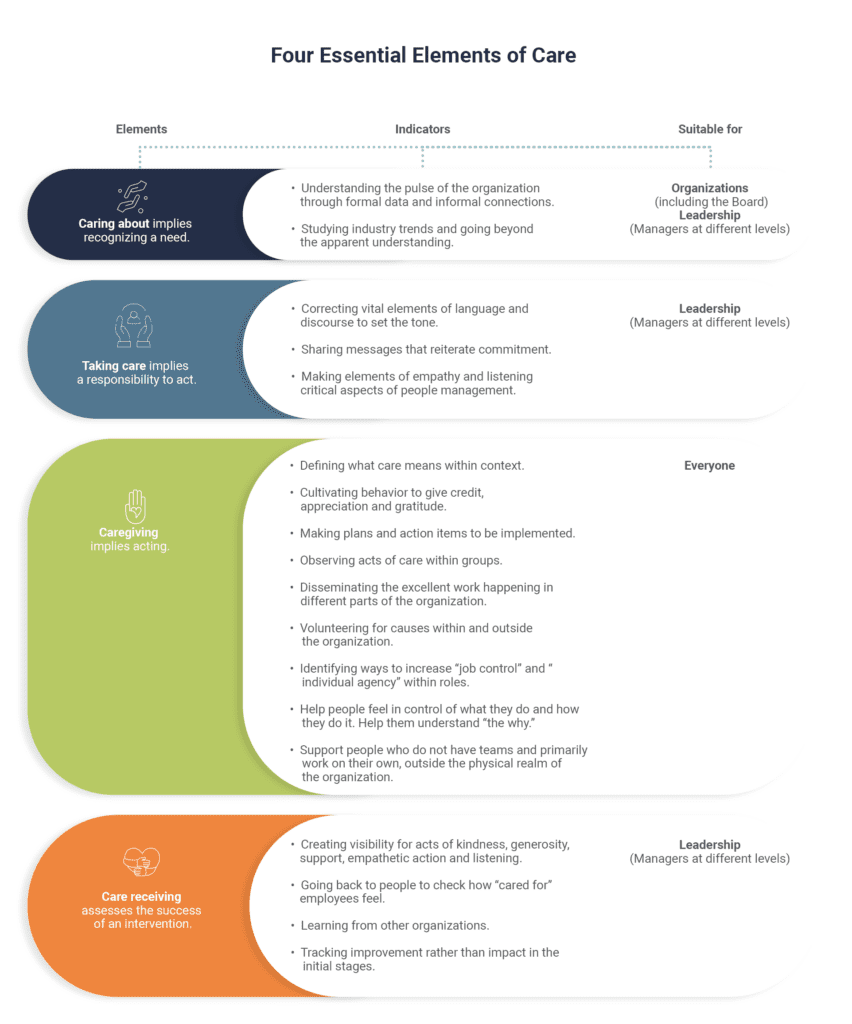Where we stand today as a workforce needs to be observed beyond the pandemic. Let us take the 2000s as a timeline to connect some dots to our present. What are some global trends? Where does it lead us? We stand at a sensitive part in the timeline, where we need to re-think some key organizational concepts. While many of us have been able to grapple with it, the pandemic has shown us the mirror of vulnerability quite clearly.
The tectonic shift in the concept of care
At this point, our understanding of care within organizations is somewhat provisional. We are looking to provide: physical care (insurance, benefits); mental health (making time for individual effort towards well-being); and awareness (webinars, learning sessions). However, if we zoom out, there is a more profound change that has impacted us – our need for more than words and gestures. We need more more authenticity, more agency and more accountability.
Therefore, we must consider care as a crucial competency within organizations. Competency is a written commitment of the organization to help employees and the work culture focus on the most critical behaviors. The keywords here are focus and behaviors. The talent management framework will play a key role in how care is understood, applied, and finds its manifestations within work.
In the absence of a universally understood definition of care, let’s look at where care manifests itself in health care. If we draw from the health care literature, there are four essential elements of care.
To help cultivate care, the organization must develop indicators and share examples of the organization’s history itself. This step is foundational and elicits directional support.

The focus here is on cultivating care such that it becomes part of the organization’s DNA.
The organization will face real challenges in creating the acceptable/non-acceptable business boundaries which will encircle this monumental organizational change. The figure below gives us a pictorial view.
How does the language used within the organization promote or hamper the understanding of care?
Who defines what goes?
How can the organization help people realize the impact of care within and outside the organization?
How does the organization demonstrate its commitment to caring for its people?
How does the organization recognize instances of appropriate behavior?
Who holds the fort? Does the responsibility lie more on the manager in this case?
How can tricky situations where the business impact comes under the scanner be tacked?
The implementation challenge lies in the beginning. The payoff to employees and employers alike is more supportive workplaces where people want to work, not a place where they have to work.



















